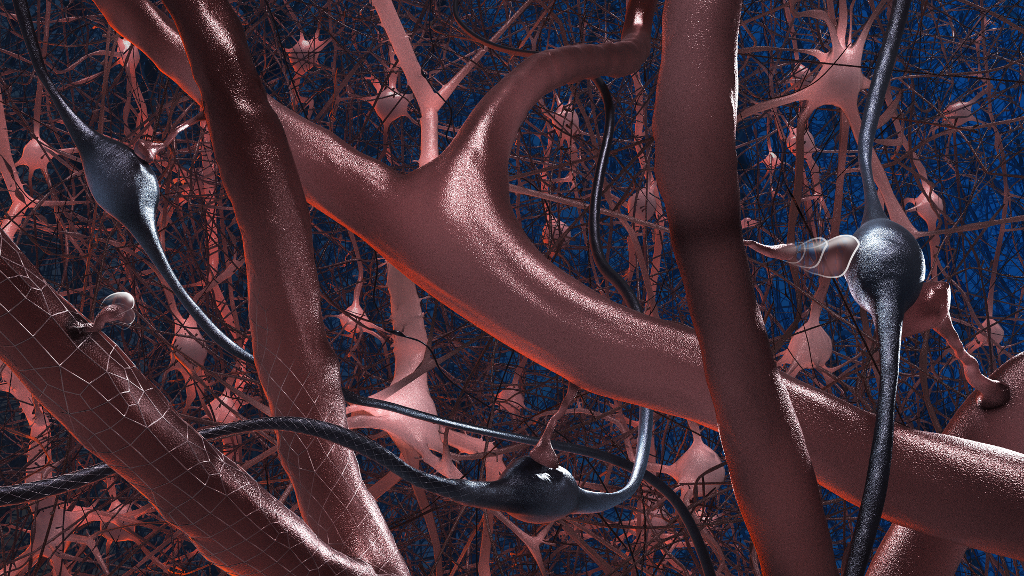
Simulating the interactions between neurons helps scientists understand how the brain learns and stores memories, and replicating some of this in high-performance computers could enhance processing. Image courtesy of Nicolas Antille of École Polytechnique Fédérale de Lausanne.
Minds and computing machines must store information – what we usually think of biologically as mechanisms of learning and memory. Some of that storage occurs in the brain at a synapse, the tiny gap between two neurons. Electrical activity in the neurons on both sides of a synapse can cause long-term changes in how this communication channel works. “For example, (the connection) can get weaker or stronger,” says Eilif Muller, section manager of cells and circuits in the simulation neuroscience division of the Blue Brain Project at École Polytechnique Fédérale de Lausanne in Switzerland. This is called synaptic plasticity, and Muller and his colleagues simulate it in supercomputer models.
Muller’s team will explore synaptic plasticity with a grant of 100 million process hour through the Department of Energy’s INCITE (Innovative and Novel Computational Impact on Theory and Experiment) program. The group will perform the work on the Mira supercomputer at the Argonne Leadership Computing Facility, a DOE user facility. The researchers will combine a biophysical model of synaptic plasticity with a detailed model of a piece of neocortex that Muller and his colleagues produced in the Blue Brain Project. The neocortex is one part of the brain involved in storing memories.
The simulation of synaptic plasticity will even include synaptic spines – little protrusions where information is passed. For simplification, the simulation depicts a spine as a point, but includes receptors for calcium and N-methyl-D-aspartate (NMDA), chemicals involved in transmitting neural signals across synapses. The simulations will help scientists understand how plasticity is affected by one massive electrical event, called an NMDA spike, that’s generated through the nonlinear interaction of NMDA receptors at nearby co-activated synapses. “We define plasticity in this biophysical way so that we can ask how NMDA spikes interact with ongoing plasticity processes,” Muller explains.
With the Mira runs underway, Muller and his colleagues hope to “elucidate some fundamental concepts of how memory could be stored in cortical networks,” he says. By learning more about how brains capture and store information, computer engineers gain more options in emulating similar processes in hardware.